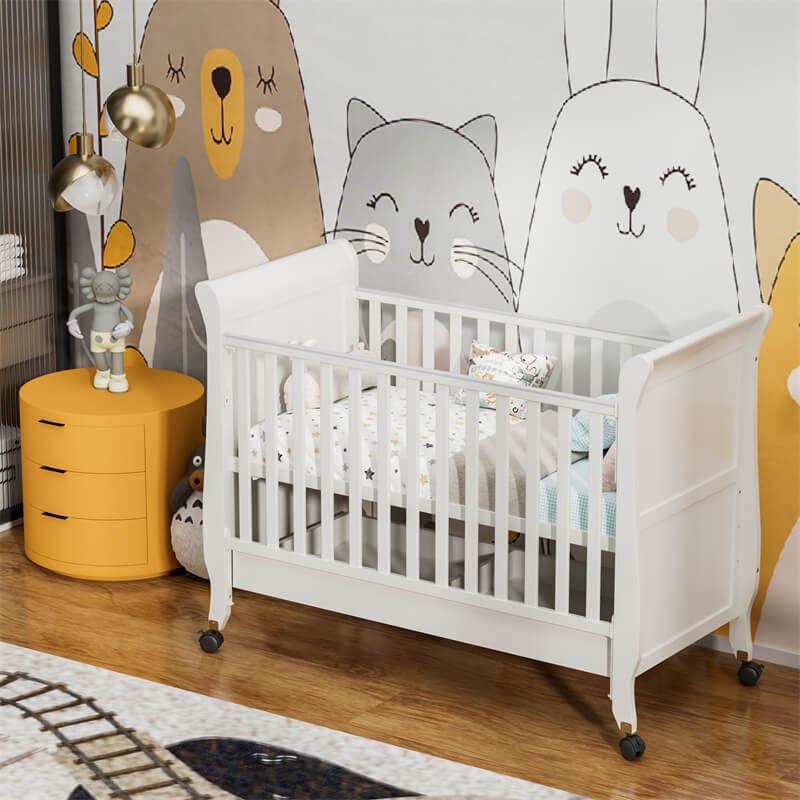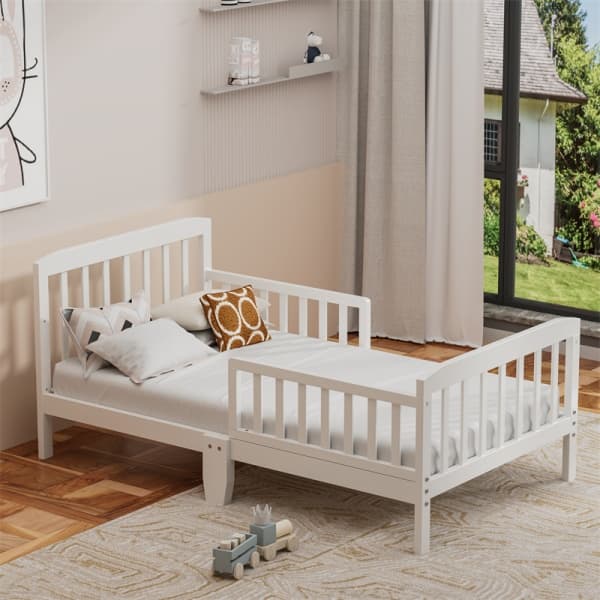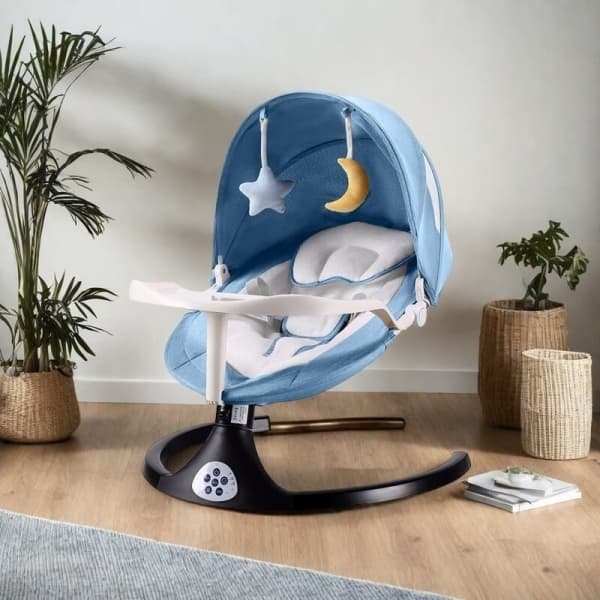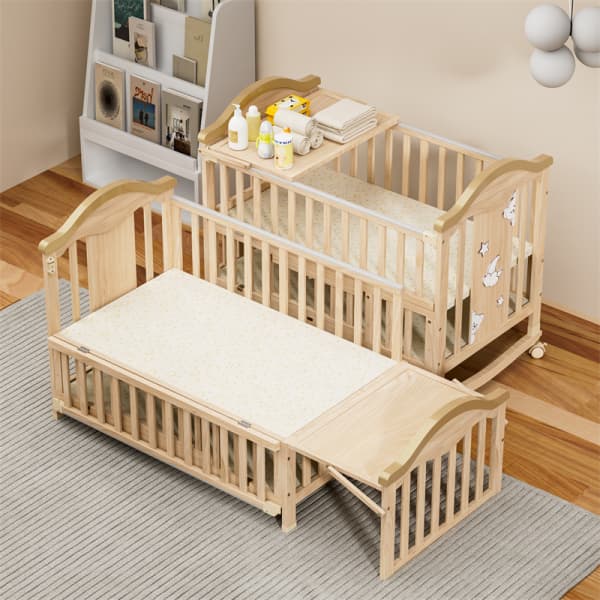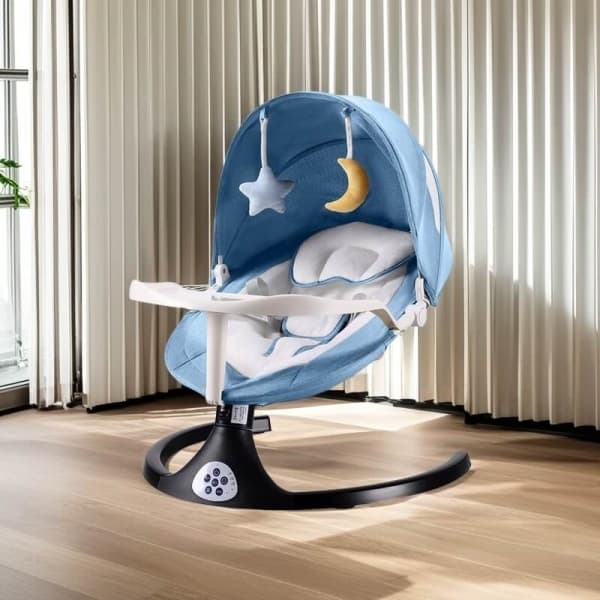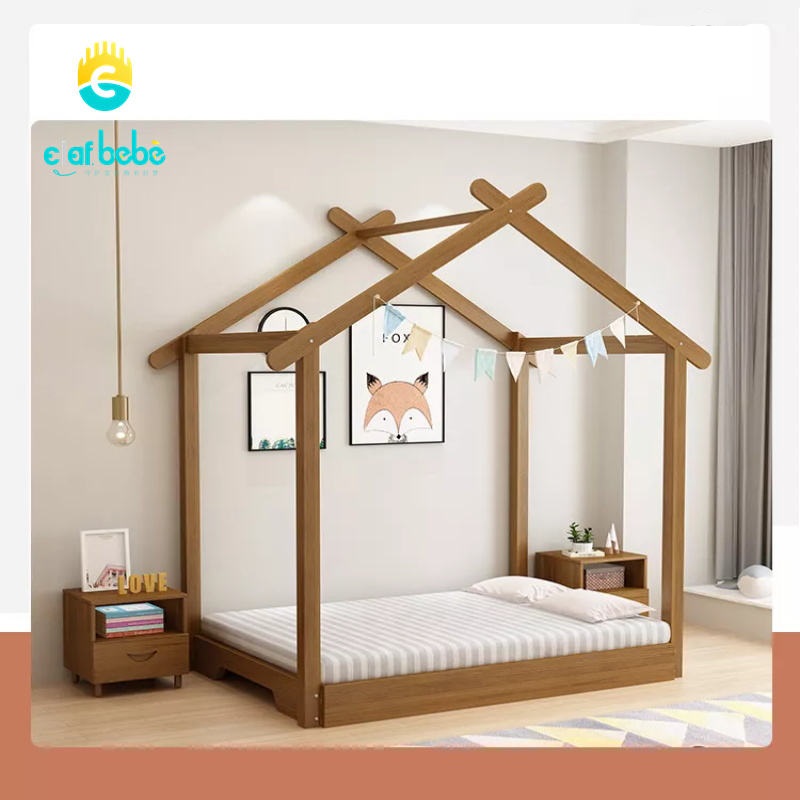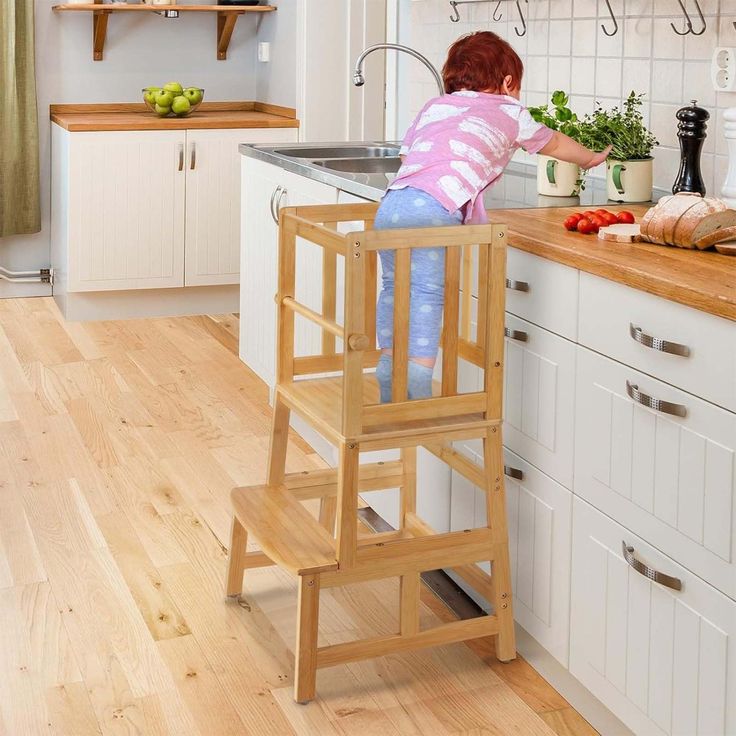Planning to visit your parents with your sweet baby? Get ready for a heartwarming welcome filled with hugs, kisses, and endless caresses from the proud grandparents!
But wait, are you staying the night or spending extended time at their house? Don’t forget to pack a portable crib for your little one’s comfort.
We’ve curated a delightful guide to help you choose the perfect baby cot that’s not only travel-friendly but also ideal for creating a cozy haven at your grandparents’ home. Let’s face it, every grandparent’s house should be a home away from home for your precious baby!
Are Portable Cribs Safe for Overnight Use?
Most portable cribs are manufactured to strict safety standards.
In the United States, portable cribs must meet Consumer Product Safety Commission (CPSC) guidelines, which are the same standards that apply to full-size cribs.
The convenience features of portable cribs do not compromise their sleeping function, and cribs that meet standards can be a safe choice for overnight sleep.
Benefits of Using a Portable Crib for Grandparents’ Sleepovers
1. Easy to Carry
Whether you are visiting grandma’s house for the weekend or staying overnight at a relative’s house, a portable crib is easy to fold up, making it easy to pack and carry. No more worrying about whether there is enough space for a full-size crib or trying to use a makeshift sleeping arrangement. You can easily fit it in the trunk of your car.
2. Safety Guaranteed
Portable cribs have breathable mesh sides, a sturdy frame, and a secure locking mechanism. You can rest assured that your baby is in a safe environment even in a new place. Portable cribs are much safer than letting your baby sleep on a soft surface like a bed or sofa.
3. Easy to Set Up
Unlike traditional cribs, which can be bulky and time-consuming to assemble, portable cribs usually have a quick-folding feature. Whether it is a mother or a grandparent, it is easy to assemble the crib.
What to Look for in the Best Portable Cribs for Grandparents’ Sleepovers?
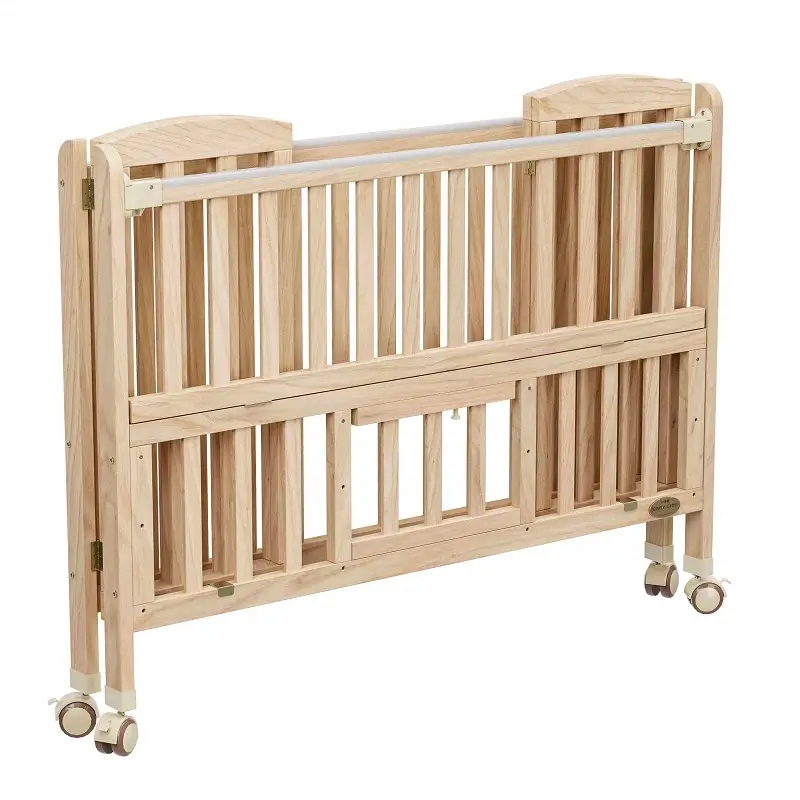
1. Comes with Reliable Security Features
Sturdy Construction: It is best to choose a crib made of solid wood, which has sturdy properties and a delicate touch. Natural wood cots made from New Zealand pine wood are not prone to deformation or bending, you can focus on this type of product.
Non-Toxic Finishes: Some international standards and regulations often stipulate limits for toxic substances (such as lead, phthalates, formaldehyde, and heavy metals) in crib finishes and paints to protect baby safety.
Slatted Sides: Opt for a crib with slatted sides that are spaced no more than 2-3 inches apart. This prevents baby from getting their head or limbs stuck between the slats.
Secure Locking Mechanisms: Look for cribs with secure locking mechanisms for the frame and wheels. This prevents accidental collapses or movement while the crib is in use.
Rounded Edges: Look for wooden cribs with rounded edges and smooth surfaces to minimize the risk of injury from sharp corners.
2. Features Compact Design
If grandparents haven’t had a child living in their home for a while, they may not have enough space for a crib.
However, even if you’re visiting, babies still need to sleep in the same room as adults. That’s where a mini collapsible crib comes in handy.
Mini cribs typically have a width ranging from 24 to 28 inches, the length ranges from 38 to 42 inches. It only takes up a small corner of the room and can be positioned right next to the adult bed by opening the sides and connecting it.
This type of small crib offers added convenience, especially for occasional sleepovers at your grandparents’ house. Unlike conventional cribs that require a lot of space, a little crib fits snugly into the room without leaving grandparents wondering which room to rearrange to accommodate the unexpected furniture.
3. Easy Setup and Storage
Although we all believe that grandparents love the baby and are willing to serve him. But we have to believe that those cribs that are complicated to install often leave grandparents powerless.
They need to look for a crib that is simple to assemble, after all, their hands-on skills are indeed gradually degrading.
Although most portable cribs are designed to be easy to install, you can still compare the installation and folding of different styles of products before purchasing to ensure that elderly grandparents can quickly use them.
In addition, it is best to choose a foldable crib, which can reclaim valuable floor space when the crib is not needed and store it in a closet, under the bed, or another storage area.
4. User-Friendly Features
Some best-rated convertible crib products will also have some humanized designs to improve the care experience of caregivers.
Adjustable Mattress Heights: A crib with an adjustable mattress height allows you to customize the crib’s sleep surface. This user-friendly feature stresses the caregiver’s back when reaching or picking up the baby.
Easy-to-Clean Materials: Look for cribs with removable and washable fabric covers, wipeable surfaces, or stain-resistant finishes, making cleanup a breeze for grandparents without compromising hygiene or durability.
Breathable Mesh Panels: Mesh panels allow grandparents to keep an eye on their grandbaby from a distance and provide peace of mind knowing that the baby is sleeping comfortably and securely.
5. Pet-Friendly Design
Do you have pets at your home or your grandparents’ home? For families with furry companions, creating a pet-friendly nursery is essential to ensure the safety and well-being of both babies and pets.
Here are some features of pet-friendly crib designs:
Elevated Design: Opt for cribs with elevated designs that keep the sleeping area out of reach of pets.
Sturdy Construction: Choose cribs with sturdy and durable construction that can withstand the curiosity and playfulness of pets.
Secure Locking Mechanisms: Choose cribs with sturdy latches or locks that require adult supervision to operate, ensuring that pets cannot access the sleeping area unsupervised.
Removable Covers or Canopies: If your pet tends to be particularly curious or persistent, consider cribs with removable covers or canopies that provide an extra layer of protection.
How to Ensure a Comfortable Sleep for Baby During Sleepovers?
Optimize Comfort with Bedding: Invest in the best bedside sleeper bedding, including a firm mattress, fitted sheet, and lightweight blankets or sleep sacks.
Adjust Baby Emotions in Advance: Create a calming environment conducive to sleep by dimming the lights, closing curtains or blinds to block out excess light, and playing soothing white noise or gentle lullabies.
Monitor Temperature and Humidity: Ensure the nursery is kept at a comfortable temperature (around 68-72°F or 20-22°C) and humidity level (around 40-60%) to promote restful sleep.
Maintain Consistency: Stick to a regular nap schedule and be patient as your baby adjusts to their sleep patterns. With time and consistency, your baby establishes healthy sleep habits.
FAQ
Q: How Do I Know if a Portable Crib Is Safe for Overnight Use?
Check for certifications like JPMA and ASTM. These indicate that the crib has passed rigorous safety testing. Make sure the crib has a firm, flat mattress with no gaps or soft bedding.
Q: Can I Use a Portable Crib for My Newborn During an Overnight Stay?
Yes, many portable cribs are designed for newborns.
Q: Can I Use a Portable Crib on a Long Trip, Like a Vacation?
Yes, portable cribs are great for long trips, like vacations. Many models are lightweight and come with a travel bag for easy portability. Some models even come with extra features like a removable changing table or storage compartments for added convenience during extended stays.
Q: How Do I Ensure a Portable Crib Is Safely Installed?
Always check the manufacturer’s instructions to ensure proper assembly. Double-check that the crib is securely locked and has no loose parts.
Q: What Is the Weight Limit for a Portable Crib?
Always check the manufacturer’s guidelines for the crib’s weight and age limits. For most models, the weight limit is usually between 25-30 pounds.
Conclusion
Visiting grandparents’ homes holds a special place in the hearts of both children and elders. It’s a time filled with warmth, love, and a touch of fuss as everyone adjusts to new routines and surroundings.
By following this guide and embracing the joys of intergenerational bonding, you can create relaxing and unforgettable experiences that strengthen family ties and create lasting memories for years to come. If you have already made plans to visit, then start by choosing a suitable crib!
Recommended Related Articles:


